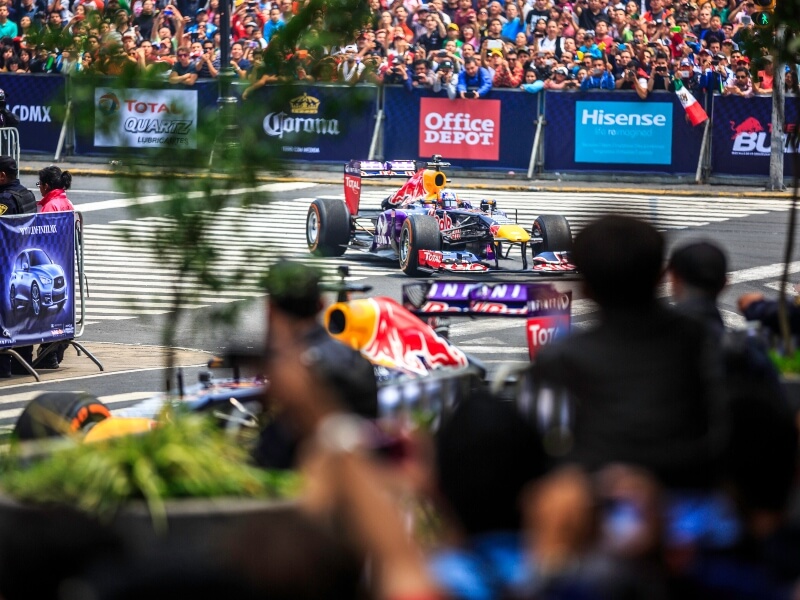
Formula One (F1) racing is the highest level of international racing in the world. The federation consists of open-cockpit single-seat vehicles that reach speeds of up to 248 miles per hour – the fastest mark of any car on a race track. But just how dangerous is F1 racing? Let’s explore the sport’s greatest risks and what we have done to make it safer.
F1’s History of Casualties
F1 initially had a terrible track record for driver safety, as 28 drivers died from 1950 to 1980. However, automotive technology and course designs back then were primitive compared to today, so they didn’t have much to work with.
Racing safety made great strides in the 1990s as vehicles began to have more protective features, but the real catalyst for change happened in 1994. Two drivers – Ayrton Senna and Roland Ratzenberger – were both killed at the 1994 San Marino Grand Prix while navigating the course’s sharp turns.
The most recent casualty happened at the 2014 Japanese Grand Prix, where driver Jules Bianchi aquaplaned off the track and collided with a recovery vehicle. He entered a coma and died of his injuries nine months later, reigniting the discussion about driver safety in professional racing.
A total of 38 drivers have died from injuries sustained during F1 races from 1950 to the present day, most of which occurred before 1980. Although F1 is inherently the world’s most dangerous racing league because of its open-cockpit vehicles and challenging race tracks, the organization has an outstanding track record in the 21st Century when it comes to casualties.
Making the Sport Safer
Ever since the sport took off in the early 1990s, the FIA (Fédération Internationale de l’Automobile) has introduced many tools and protocols to make F1 vehicles and courses safer for the drivers. These are the most influential safety additions so far.
1. Survival Cells
The survival cell or “monocoque” became the centerpiece of F1 racecars in 1981, and it’s one of the main reasons F1 became much safer after a few deadly decades.. These cells consist of a strong carbon fiber composite and Kevlar, both of which are designed to absorb the energy and impact of a crash.
They also come with a fire suppression system that the driver or pit crew can activate with the push of a button, spraying fire-retardant foam on the cockpit and engine. The cell is constantly evolving, but it must go through rigorous testing for a new feature to get approved.
One great example of the survival cell’s capabilities happened in 2020 when Romain Grosjean’s car burst through a track barrier, getting split in half and engulfed in flames. Grosjean triggered the fire suppression system and escaped the largely intact survival cell under his own power with minor injuries.
2. Roll Hoops
All F1 cars have roll hoops in front and behind the driver to protect their heads if the car rolls during a crash. It has saved many lives over the years, most recently Lance Stroll’s at the 2020 Bahrain Grand Prix (the same event where Grosjean’s crash took place). Stroll crashed and his car came to a rest upside down, which would have killed him if not for the roll hoops.

Crashes involving rolled vehicles used to be a huge problem for F1’s open cockpits, as drivers would get crushed and track marshals would take a long time to extract them from the cars. Roll hoops and other creative extraction tools have made marshals’ jobs much easier.
3. Safety Cars
Believe it or not, but safety cars have only been mandatory in F1 since 1993. Their main jobs are to keep speeds down during pit stops and stop cars from overtaking each other when there are hazards on the track. Pit stops and track hazards are still two of the main causes of crashes, so the safety car’s role is essential in limiting risks and reducing the number of accidents.
4. Barriers and Runoff Areas
After Senna and Ratzenberger’s deaths in 1994, the FIA made major rule changes including new grooved tires, smaller rear tires and narrower courses with barriers and runoff areas to cushion the impact in the event of a crash. Other logistical issues arose from these changes, but they seemed to address the safety concerns, as no drivers died for another 20 years.
5. Halos
A halo is a curved bar over the driver’s head that the FIA created in 2016 in response to Bianchi’s death. This device is not the same as the previously mentioned roll hoops, but it plays a similar role in protecting the head from flying debris. Racers and fans voiced concerns about it impeding the driver’s vision, but the device quickly proved to be a worthy addition, saving several drivers from severe injuries in the years since its introduction.
Not So Dangerous Anymore
Although there is always the possibility of a freak accident in racing, Formula One has become much safer over the years. The organization went from 28 driver deaths in its first 30 years to just three deaths from 1994 to 2015. We’ve had some close calls since then, but FIA’s safety features have been up to the challenge.
